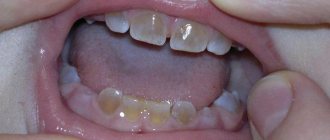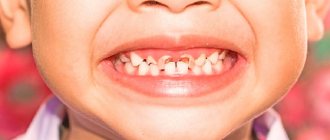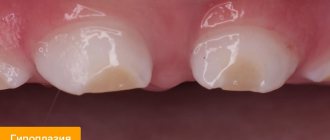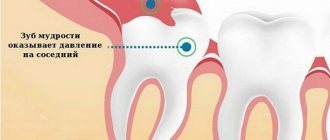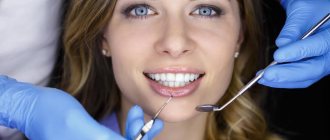In our culture, the standard of beauty is a snow-white smile. In fact, healthy, strong teeth are yellowish. The minerals contained in hard tissues give them not only strength, but also a yellowish tint. If pigmentation gets out of control, instead of a healthy shade of enamel, we end up with completely unattractive yellow teeth. This is not only an aesthetic problem, but also a psychological one. A person with yellow spots on his teeth is embarrassed to smile, prefers not to engage in conversations, and becomes withdrawn. Dentists pay a lot of attention to the problem, developing more and more new methods for lightening enamel.
Charge for regular drinks
It would seem that there is nothing reprehensible in a cup of coffee or tea in the morning, afternoon and evening. Most people have long been accustomed to these liquids, although they appeared in our culture, frankly speaking, relatively recently. One way or another, getting too carried away with them can also lead to yellow teeth. By the way, the type and color of tea does not really matter here. For example, the majority today do not even know how to choose the right green tea, opting for advertised, unnatural varieties with an abundance of artificial coloring substances. Suffice it to say that the popular so-called “milk oolong” is a chemical that the Chinese themselves will never drink.
Why do teeth turn yellow?
It all starts with a small raid. After eating or drinking, a thin film – pellicle – settles on the enamel. Bacteria begin to multiply on its surface, forming plaque. No brush can remove it completely. A dental plaque is formed, which tends to become stained under the influence of pigments, drugs, and resins.
Alas, plaque is not the only cause of yellowness, there are others:
- Genetics
Each person has their own shade of enamel. It is laid down at conception and a special gene is responsible for this. There are congenital diseases that are accompanied by enamel defects (amologenesis, marble disease). Dark shade can be inherited from nature, just like eye color or nose shape.
- Food
Through pores in the enamel, pigments from food penetrate into the dentin, changing its color. In the first place is coffee, black tea, dark berries, red wine. However, there are products whose ability to stain dentin we do not even suspect. Green tea, for example, or vegetables containing carotene: carrots, tomatoes, spinach. Water can have a yellow tint if it contains too much fluoride.
- Medicines and filling materials
Some antibiotics, the most famous of which is tetracycline, can change the color of teeth.
It also changes when using filling material, amalgam.
. Pigments from it can spread throughout the entire crown.
- Age
From the moment the first one erupts, we put our teeth to the test. We eat hot and cold, sour, drink sweet soda, crack seeds, smoke. It's no surprise that the older we get, the more likely we are to develop yellow stains on our teeth. In addition, the thickness of plaque increases over the years, changing the color of the enamel. Teeth become yellower.
- Smoking
Cigarettes contain tar and tar. They settle on the enamel, giving it a yellow-brown tint that begins to accumulate between the teeth and then spreads to the entire surface.
- Oral hygiene
If you do not take care of your teeth, forgetting about regular brushing or flossing, their color will quickly cease to please you. It is worth remembering that professional cleaning is the best way to remove plaque. It should be carried out at least once a year.
It is necessary to care not only for permanent teeth, but also for milk teeth. This needs to be done especially carefully if you have braces installed.
- Location
It happens that fangs look yellower than other teeth. This is the norm. The thickness of the enamel is the same everywhere, but the thickness of the dentin on the fangs is much greater. Therefore, the shade of the fangs is yellowish, even if the rest of the teeth are white.
- Lesions of hard tissues
With a wedge-shaped defect, the teeth turn yellow near the gums, exposing the neck. With fluorosis, yellow spots are located over the entire surface. If a yellow tint appears and it darkens over time, this is a reason to consult a doctor.
What to do with yellow teeth
Thus, we counted plenty of factors. The question remains - what to do about it? Today, technology makes it possible to solve the problem of yellow teeth quickly, painlessly and effectively. At Dentik we use the innovative ZOOM Advanced Power whitening system. It allows, using calcium phosphate and exposure to a safe diode lamp, to lighten teeth by several tones, without harming their health and guaranteeing a long-term effect. The specialist will also advise you on how to properly care for your whitened teeth and give you a set of home care products.
Contact our clinic and take advantage of this great opportunity! A dazzling smile is simple and safe!
“Handy” options for combating yellow teeth
There are many home whitening methods to lighten the shade of tooth enamel. However, before you try another method on yourself, you should consult a specialist on this issue. Below we have provided some effective tips to help make your smile snow-white:
- You need to firmly give up drinking red wine, coffee, tea and smoking.
- Natural natural whitening agents include fresh basil, lemon juice, apples and sage leaves.
- Once a week, you are allowed to add a little baking soda to the toothpaste (this is a rather aggressive abrasive substance, so you should never overuse it).
- It is better to drink any sweet drinks through a straw so that the liquid cannot leave characteristic marks on the enamel.
- Eating solid natural foods in their raw form helps to naturally cleanse the outer layer of enamel.
If you have a problem similar to that described in this article, be sure to contact our specialists. Don't diagnose yourself!
Why you should call us now:
- We will answer all your questions in 3 minutes
- Free consultation
- The average work experience of doctors is 12 years
- Convenient location of clinics
Single contact phone number: +7
Make an appointment
Is it natural to have yellow tooth enamel?
Tooth enamel is naturally grayish-white or bluish-white. The natural shade of the dentin underneath is yellow, sometimes with splashes. The thinner the enamel, the brighter the dentin appears.
Also, yellow enamel indicates an increased level of mineralization and that teeth are able to resist various pathogenic microorganisms, which often cause caries. Too white tooth enamel often indicates an insufficient amount of minerals in the body, which should be accompanied by increased sensitivity and predisposition to caries.
Some people have such a naturally thin layer of dental enamel that they cannot whiten their yellow teeth, despite trying various whitening treatments and buying expensive toothpastes.
The color of tooth enamel is purely individual and is determined not only by any dental pathologies, but also by the physiological characteristics of the body. But gender is not important: the color of girls’ teeth is no lighter than that of boys.
Causes of yellowing teeth
As you know, our tooth is protected by a special shell – enamel. The enamel tends to deplete over time, and then the internal substance of the tooth begins to appear, which in dental science is designated by the term “dentin”. Dentin, like enamel, is very sensitive to the effects of liquids, food and the environment in general.
Teeth react very sharply to sweet foods. There are bacteria in the mouth that digest sugar. Such bacteria produce acid, which spoils the enamel and eats it away. The consequence of this is the formation of tiny micropores in which the remains of food and liquids we consume are retained. Therefore, uncontrolled consumption of sugar and sweet foods must be limited.
Very common causes of yellowing of tooth enamel are smoking and drinking alcoholic beverages. Tobacco smoke, which contains many toxins, not only destroys the top layer of the tooth, leaving a yellow plaque, but also increases the risk of developing other inflammations and complications in the oral cavity.
The next factor is improper chewing of food, when one side of the jaw, right or left, is involved in the eating process. This causes substances that destroy enamel to accumulate only on certain teeth.
There are also lesser known causes of yellowing of the enamel, but they also have a significant impact on the condition of teeth. For example, it is very harmful to drink non-distilled water. Untreated water can contain a lot of rough substances and metals. In addition to the fact that it is difficult for the body itself, it injures the enamel.
Try to eat as many foods as possible that are not brightly colored. Frequent consumption of brightly colored foods can indirectly affect the discoloration of tooth enamel. This is not a plaque yet, but already a stain that requires measures to get rid of it. To remove pigments that color the enamel, it is enough to use a mouth rinse in time, that is, immediately after eating. It washes away dyes, preventing them from penetrating the micropores of enamel or dentin.
As you know, rapid yellowing of teeth can be caused by frequent consumption of tea (especially green varieties) and coffee. But what if you are an avid coffee drinker and drink several cups of this invigorating drink a day? The solution is still the same - use mouthwash and do not forget to brush your teeth properly in the morning and before bed.
Yellowing of tooth enamel may be a consequence of the composition of the salivary fluid. Saliva helps to naturally clean teeth; its natural function is to remove dirt from the enamel. If the harmonious composition of the salivary fluid is disrupted, the tooth enamel begins to quickly turn yellow. The composition of saliva can change due to general ailments of the body - influenza, colds, ARVI. If a person is sick, his saliva becomes more viscous and can no longer clean the surface of the tooth.
Finally, it is necessary to highlight a number of special cases in which yellowing of the enamel is observed. These cases are related to the characteristics of human health.
- Changes in tooth color due to taking certain medications. Such drugs include, for example, tetracycline.
- Too much fluoride enters the body, most often through drinking water.
- The human body has problems with the gallbladder or liver (another sign of these diseases is staining of the tongue).
- Hereditary factor (yellowing of the enamel during the formation of dental tissues).
- General age-related changes in the body.
To begin with, it is worth noting that, as with any disease, it is necessary to take preventive measures to prevent its development. What to do in case of yellowing teeth:
- eat neutral-colored food and purified water; regularly brush your teeth correctly in the morning and evening;
- use mouth rinses after meals, especially after drinking tea, coffee, wine;
- get rid of smoking.
The article material was approved by the doctor: Feshchenko (Kashirova) Evgenia Aleksandrovna Dentist-therapist
16 years
What do yellow teeth look like in a photo?
If you have no idea what yellow teeth look like, see the photo below. In some patients, yellowness is characteristic of only some teeth, while in others, all yellow teeth can be seen without exception. The photos below also demonstrate the different localization of yellowness - in some it evenly covers the entire tooth, while in others it is localized only on some part of it. The uneven yellow color of the enamel, as can be seen in the photo, is observed when taking tetracycline antibiotics, as well as when smoking (a more yellow color is observed in the cervical areas due to the presence of stones).
Below there is a photo of what yellow teeth look like, photos of the teeth of children and adults.
Is yellowness normal or pathological?
Not every yellowness should be perceived as a deviation from the norm. Sometimes, due to hereditary factors, a child’s enamel becomes more transparent than that of other children. The lack of white pigment causes the dentin to show through, resulting in darker teeth.
Some dentists are inclined to believe that it is better not to correct or whiten such enamel. At least until the child reaches adulthood and hard tissues are fully formed.
If yellow teeth are showing signs of health, the best thing you can do for your baby is to practice good oral hygiene and good nutrition.
How to whiten yellow teeth at home
If the reason why your teeth have turned yellow is poor oral hygiene, then you can not only enhance the care of your gums and dental enamel, but also choose a good whitening toothpaste. It will remove plaque from teeth and lighten the enamel.
There are many different ratings for oral care products, but each consumer must make their own choice after consulting with a dentist. Only he can advise the patient on the optimal toothpaste.
There are several high-quality whitening pastes:
- White Wash Nano. Ideal for sensitive teeth.
- Diamond Swiss Smile. Helps whiten enamel thanks to diamond particles.
- Lacalut White and Paradontax. They return natural whiteness, that is, they are not suitable for people who have naturally yellow tooth enamel.
- Natura House Extra.
- Perfect White Black. Copes perfectly with the yellow stain of a smoker.
You can take any toothpaste, add a solution of hydrogen peroxide to it and brush your teeth with this solution once every 3-4 days, alternating with regular brushing. The desired effect will be achieved in a few weeks.
No toothpaste will help get rid of yellowing of enamel due to tetracycline. To lighten it, you will have to resort to hardware bleaching. Fighting tetracycline stains on enamel with simple means (rinses, pastes or homeopathic medicines) is pointless and even dangerous for the future health of teeth. It will not be possible to clean the deep layers of enamel in this way.
Yellow plaque in children over 7 years old
Deposits discovered during school age are most often associated with improper tooth brushing procedures. It is important that a suitable brush is selected taking into account the level of sensitivity of the gum tissue. Special care is not required when performing routine procedures systematically. True, if the situation is seriously advanced, then you cannot do without a visit to the dentist. When a child is 8 years old or older, teeth cleaning using the Air Flow method is prescribed, if necessary. This procedure is safe and painless.
A harbinger of pathology is bad breath and a slippery coating on the crowns and gums. A timely cleaning procedure will prevent the mineralization of soft plaque, which often happens at this age. Refined and soft carbohydrate foods should be limited. Such products get clogged into the interdental spaces. It is useful to give children solid vegetables and fruits, for example, carrots or apples. Remember that proper hygiene is the key to oral health and the best remedy against yellow discolouration!
Why are teeth yellow from birth?
A yellowish tint to teeth is normal. The chance of getting a snow-white smile from birth is zero. Every person has their own teeth color. And what it will be depends on genetic factors. If the parents have a yellow tint, then the child is likely to have the same teeth. There is a gene that determines the color of the tooth surface even before birth. Therefore, immediately after teething in infants, they may have a yellowish tint. Moreover, its intensity varies from light to dark.
Enamel is naturally almost transparent. A certain yellowish tint is given to it by minerals that strengthen the teeth and make them strong. The color of a smile is mainly determined by the dentin underneath the enamel. Its natural color is yellow or brown because it also contains minerals. If the enamel is thin, the dentin is very translucent. When its structure is thick, the yellowness is hidden. Therefore, to the surprise of many, yellow teeth from birth should not be considered a defect.
High mineralization of teeth will help prevent the development of caries. While their pronounced white color with a slight dullness, on the contrary, may indicate a lack of minerals. Because of this, the risk of developing dental diseases and hypersensitivity increases. If you look closely, you can see that the fangs are yellower than their “neighbors.” This is explained by the fact that they are the strongest and contain a large proportion of dentin.
Methods to combat plaque
At the initial stage, soft deposits can be easily removed with a regular toothbrush. Experts also recommend using special rinses, pastes containing useful minerals and additives to strengthen the enamel. If you neglect the recommendations of specialists and forget to brush your teeth, the plaque can become hard. Then it will be much more difficult to deal with him.
Professional cleaning at a dental clinic will help remove stone and other deposits. The examination may also reveal the following pathologies: caries, stomatitis, periodontitis, gingivitis, etc. They will need to be treated first.
An equally popular procedure is enamel whitening. Today there are many methods; the appropriate option should be selected based on the results of a preliminary examination and the clinical picture of a particular patient. Most methods are based on the action of hydrogen peroxide, which, by interacting with a catalyst, breaks down plaque and returns the smile to its former attractiveness. It is important to note that bleaching allows you to lighten enamel up to 14 tones in one session, and professional cleaning only returns the enamel to its original shade.
previous post
Why install dentures where there are no teeth?
next entry
Why is plaque on teeth dangerous?
Don't underestimate the plaque that accumulates on the surface of our teeth every day. It is not as harmless as it might seem at first glance. Over time, plaque can cause the development of serious pathologies, such as periodontitis. This disease affects the condition of the gum tissue and can appear against the background of already progressing gingivitis. If left untreated, the disease can lead to the loss of one or more teeth.
The plaque quickly turns into hard deposits - stone. These deposits contain small particles of food, bacteria, and calcium compounds of epithelial cells. This is no longer just an aesthetic defect, but a serious problem leading to active damage to the enamel by caries.
This pathological process is characterized by targeted demineralization of the hard tissues of the tooth, as a result of which they gradually darken and die. In this case, a cavity appears in the dentin structure, which grows over time and can even affect the root of the tooth. This pathology is difficult to treat, patients often experience relapses, and in 40% of people the situation becomes chronic.
Effective dental methods for teeth whitening
If you are really interested in how to whiten your teeth, it is better to go to a doctor and take into account his recommendations. Today dentistry offers different methods to solve the problem:
- Mechanical cleaning is the simplest method, carried out using special attachments. As a result of the procedure, soft and hard dental deposits are eliminated. This technique helps prevent caries and gum disease.
- Hardware cleaning. How to clean your teeth and eliminate their yellowness? During the procedure, the doctor removes plaque using an ultrasound machine. Special attachments allow you to remove supragingival and subgingival deposits. After the procedure, the natural shade of the teeth returns.
- Bleaching. There are different ways to lighten tooth enamel. This can be chemical, intracanal, laser and photobleaching. These techniques differ in cost and effectiveness.
- Veneers. If you are looking for a way to remove dental defects, you should consider the option of special onlays for the front teeth. Veneers allow you to get a perfectly even and, what is important in case of yellow discoloration, a snow-white smile. This technique does not involve a strong impact on tooth enamel - grinding, laser treatment, etc.
Modern techniques make it possible to lighten enamel with varying degrees of yellowness. The procedures do not cause pain in the patient and are performed quickly enough. The doctor will recommend the most suitable technique for you.



